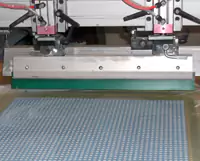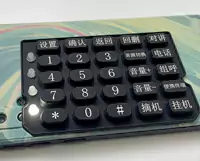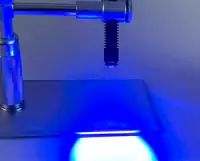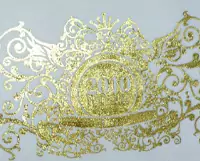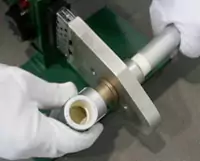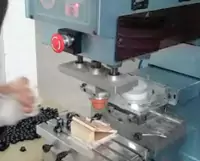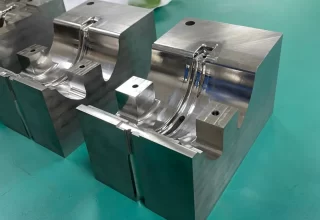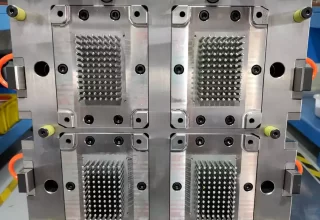plastic injection molding
Injection Molding service
We provided best services to all customers.
We offer first-class plastic injection molding services for your parts. You get high-quality, fine finish, and precisely sized parts at competitive prices.


Start Quote
Promise: All files are secure and confidential.
Our services
Although new technologies such as 3D printing or others are constantly emerging, injection molding remains the most cost-effective method of producing plastic parts in both small and large batches.
CapableMachining company has more than 12 years of experience in the injection molding industry, we can provide complete manufacturing solutions for your projects, and we are committed to improving customer satisfaction and creating maximum value for customers.
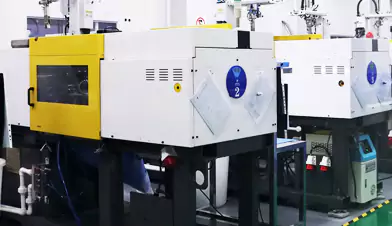
Plastic injection molding
Injection molding is the most common method for mass-producing plastic products. The basic process is to melt the plastic, inject it into the mold, eject the final product after the plastic solidifies, and repeat the cycle.
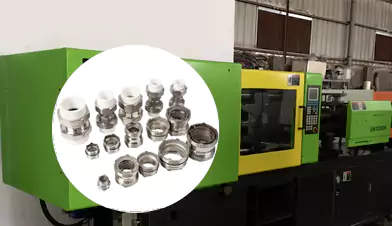
Insert molding
Insert molding is a very practical injection molding process, which can increase the strength or other properties of the final part by inserting other materials, without greatly increasing the cost of the product.
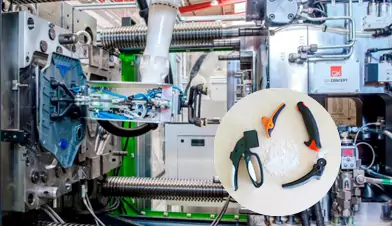
Over molding
Overmolding is a process in which multiple materials are layered together to form a composite article. It usually involves injection molding a base material over one or more prefabricated parts to form an organic whole.
Other services
Capabilities
Tolerances
Heavily depending on the plastic type and the size of the part, typically +/- 0.15mm or +/-0.006 inch
Mold Life Cycle
Typically 300,000, and 600,000 if required.
Leading Time
Typically: tooling 30 days, injection molding 3 days
Injection Material
Most of the thermal plastic, ABS, HDPE, PE, PC, PMMA, PA6, PA66, POM, PBT, PET, PVC TPU, TPE, Silicone Rubber… Learn More >
How to use our service?
After you submit your file online, we will first review your design file and quotation, and then communicate with you efficiently to ensure that your production specifications, delivery time and price meet your project needs. Then, after your consent, we will use the part data you designed for CNC machining and manufacturing of injection molds (see injection tooling for details). After the mold-making is completed, we will send a part sample (T1) for your sample retention and approval. Once the mold is perfected and approved, we officially start production.
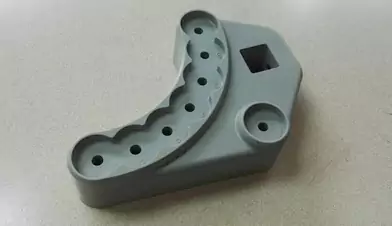
High Quality
CapableMachining with high-quality operators and a perfect quality assurance system, it can produce high-quality molds.
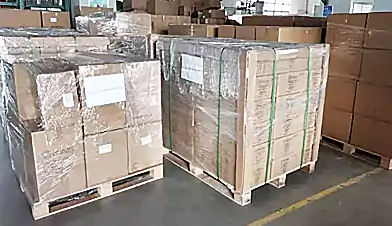
Fast Lead Time
We have an efficient management system and well-trained and more experiences staff, so we can provide fast lead time.

Reasonable Price
We have specialized production capacity, stable supply chain, and professional equipment to ensure more reasonable prices for customers.
Difference Between Insert molding and Over molding
The advantage of insert molding is that complex structures and functions can be realized. It is widely used in automotive, electronic equipment and medical equipment to provide strong mechanical properties and functionality
Overmolding’s advantage is the variety of materials and design flexibility that can be achieved. It is commonly used in areas such as electronics, tool grips and household items to provide a good look and feel.
| Insert Molding | Over Molding | |
|---|---|---|
| Process | Combining Inserts with Plastic Injection | Injection molding of additional materials on top of the base material |
| Additional material | usually a metal part | Other plastic materials such as PTE |
| Fearture | Strength or other performance enhancements | Provide protection, improve appearance or add additional functions |
| Application | Automobiles, electronic equipment, medical equipment, etc. | Electronics, Tool Grips, Household Goods, and more |
| Cost | higher cost | relatively low |
General Workflow of Injection Molding
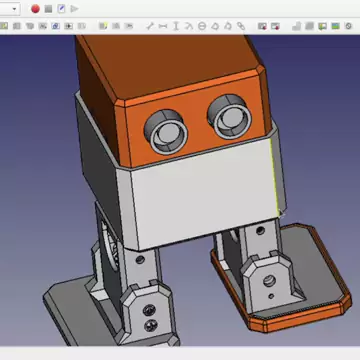
1. Stp File && Information Sent
2. Quotation


3. Customer place an order
4. We send detail DFM
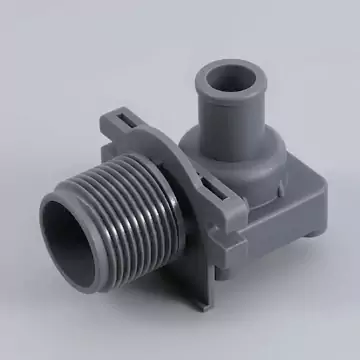
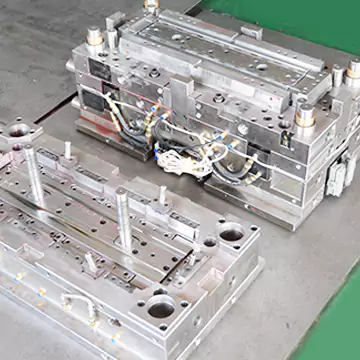
5. Make the mold
6. T0 (first time test molding)
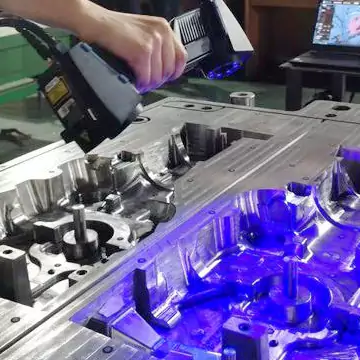

7. T1 (second test molding)
8. Check before acceptance
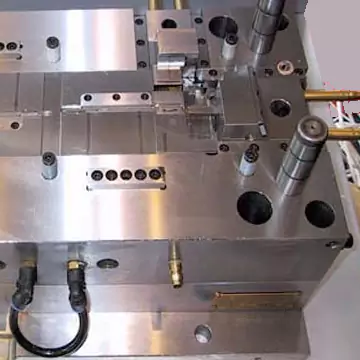
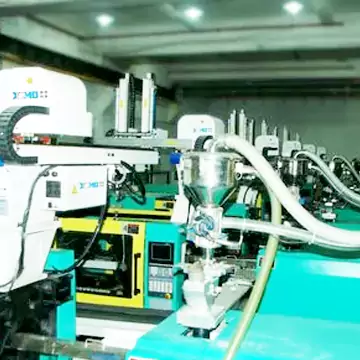
9. Manufacturing
Common injection Materials
In the business for many years,
we have high-quality raw material supply channels,
providing more than 50 types of thermoplastics and thermosetting plastics for injection molding for manufacturing,
suitable for many industries such as medical care, new energy, consumer electronics, and daily necessities.
Customers can choose models with confidence and focus on product manufacturing.
Rigid Materials
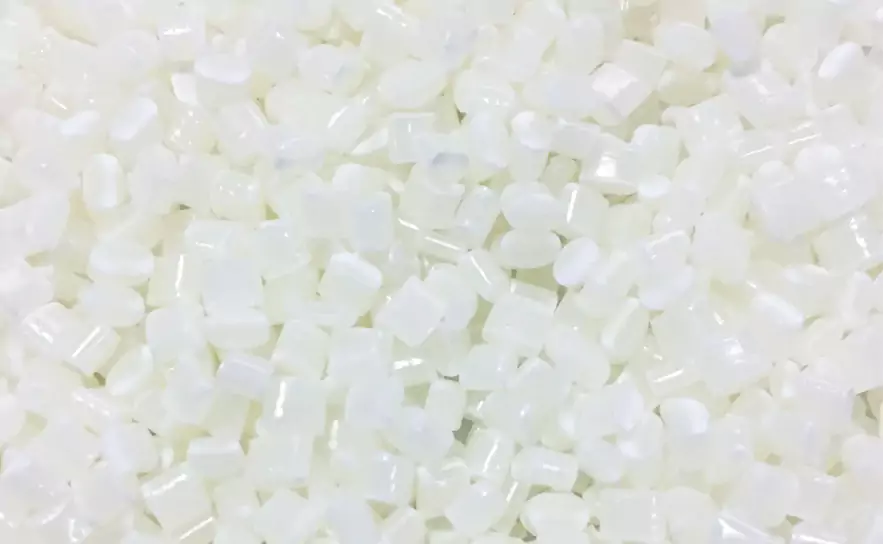
ABS
ABS material is currently the largest and most widely used polymer, with excellent impact resistance, heat resistance, low temperature resistance, chemical resistance and electrical properties.
It also has the characteristics of easy processing, stable product size, and good surface gloss. It is easy to paint and color, and can also be used for secondary processing such as surface metal spraying, electroplating, welding, hot pressing, and bonding.
Widely used in industrial fields such as machinery, automobiles, electronic appliances, instrumentation, textiles and construction.
| Tensile Strength(Mpa): | 35~62 | moisture absorption(%): | 0.2~0.45 |
| Shrinkage(%): | 0.3~0.8 | CLTE(×10-5 /K)/℃: | 8 |
| Density(g/cm3): | 1.05 |
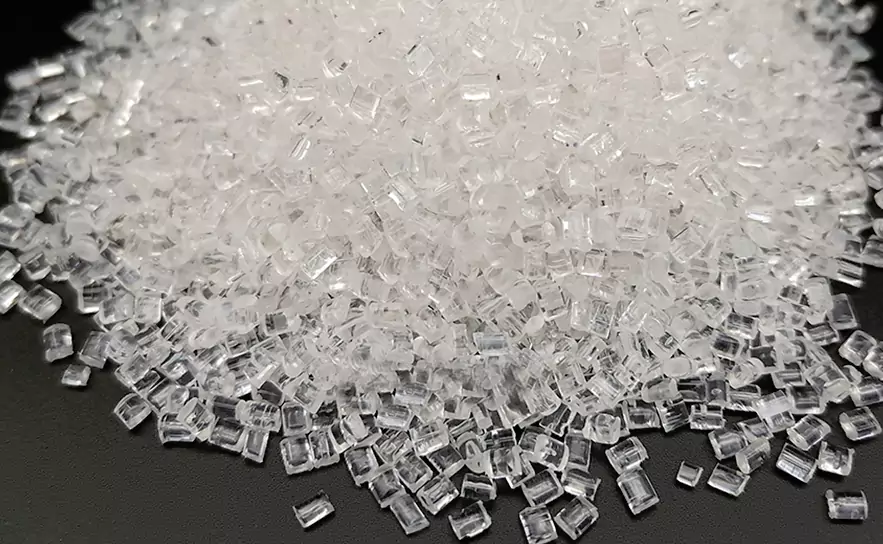
ABS+PC
ABS engineering plastic is PC+ABS (engineering plastic alloy). It has impact resistance and excellent processing fluidity of ABS resin.
Therefore, when applied to thin-walled and complex-shaped products, it can maintain its excellent performance and maintain the formability of plastics and a material composed of an ester.
The largest application areas of ABS resin are automobiles, electronic appliances and building materials.
| Tensile Strength(Mpa): | 40 | moisture absorption(%): | 0.2~0.45 |
| Shrinkage(%): | 0.4~0.6 | CLTE(×10-5 /K)/℃: | 8 |
| Density(g/cm3): | 1.15 |
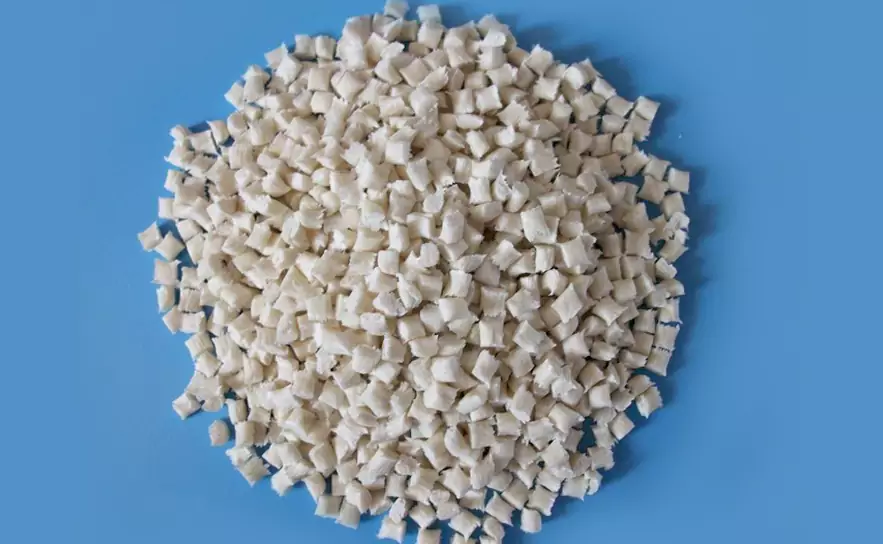
LCP
LCP (Liquid Crystal Polymer) material is a high-performance engineering plastic with excellent thermal stability, mechanical strength, solvent resistance, flame retardancy and electrical properties. It is a thermoplastic with fully crystalline molecular chain, also known as liquid crystal polymer material.
It is commonly used in the manufacture of components that require high precision and high performance, such as automotive parts, electrical and electronic components, medical devices, industrial equipment, and aerospace equipment.
Due to its special molecular structure, LCP material has a very low coefficient of thermal expansion and excellent resistance to deformation, making it an excellent material for heat exchangers.

Nylon 6
Polyamide 6 or Nylon 6 (PA6) Properties: translucent or opaque milky white crystalline polymer.
Features: thermoplastic, light weight, good toughness, chemical resistance and durability; good wear resistance, self-lubricating and solvent resistance
Combustion identification method: yellow flame on blue background.
Advantages of the material:
- High mechanical strength, good toughness, high compressive and tensile strength (tensile strength is more than twice that of ABS)
- Excellent wear resistance and small friction coefficient
- High fatigue resistance, repeated bending mechanical strength is not affected
- Corrosion resistance, mainly for alkaline and most saline liquids, inert to biological erosion, antibacterial and anti-mildew.
- High heat resistance, excellent electrical performance.
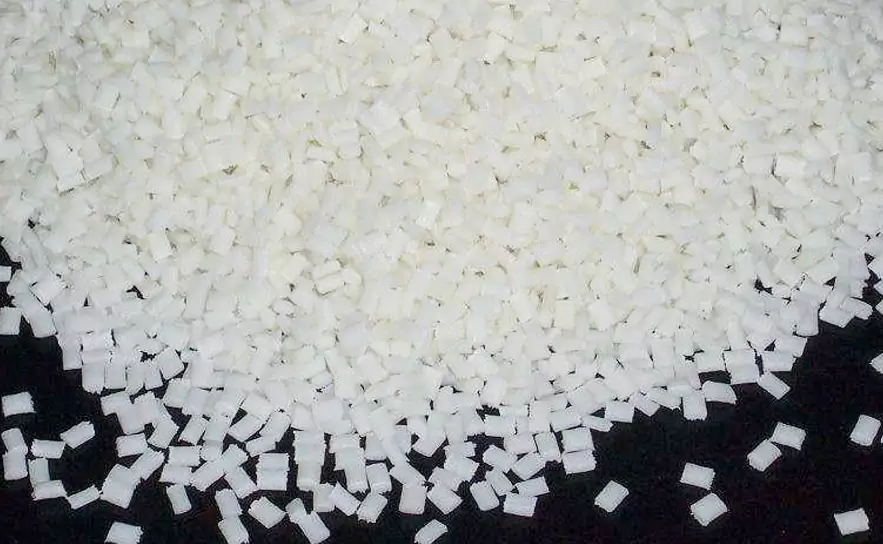
Nylon 66
Nylon-66 is a thermoplastic resin, which is generally produced by polycondensation of adipic acid and hexamethylenediamine. Insoluble in common solvents, only soluble in m-cresol, etc.
Features:
- High mechanical strength.
- Good resistance to stress cracking, it is the PA with the best wear resistance, and excellent self-lubricating property, second only to polytetrafluoroethylene and polyoxymethylene.
- It has good heat resistance and is a self-extinguishing material.
- Good chemical stability, especially excellent oil resistance, but easily soluble in polar solvents such as phenol and formic acid.
- Adding carbon black can improve the weather resistance; the water absorption is high, so the dimensional stability is poor.
- Good molding processability, can be used for injection molding, extrusion, blow molding, spraying, casting molding, machining, welding, bonding.
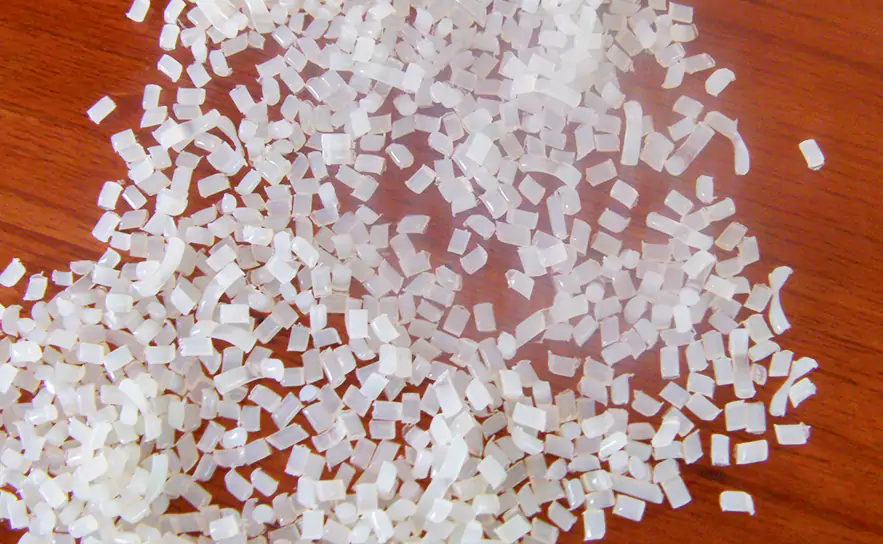
Nylon 11
White translucent thermoplastic resin. The relative density is 1.04~1.05(g/cm3), the melting point is 187 degrees Celsius, the tensile strength is 50 to 59 MPa impact strength, the heat distortion temperature is 54 degrees Celsius, and it is self-extinguishing.
It has the permeability of nylon resin, and is characterized by low relative density, low water absorption, softness and excellent low temperature resistance. It is formed by polycondensation of d-amino acid in an autoclave.
Suitable for injection molding, extrusion molding, vacuum forming, rotational molding and centrifugal casting, etc. It can be plasticized and reinforced for filling modification. It is especially suitable for making various hoses, packaging films, cable sheaths, wear-resistant parts, military and aerospace materials.
The powder can be used for roll dipping and electrostatic spraying to impart abrasion and chemical resistance to metal surfaces. Resistant to common acids, alkalis and oxidants.
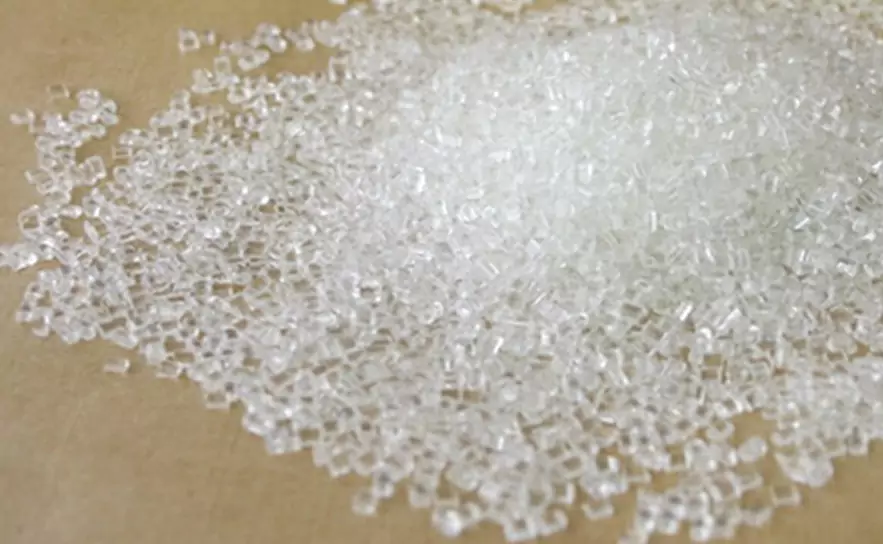
Nylon 12
Nylon 12, relative density 1.01~1.02(g/cm3), melting point 178 degrees Celsius, tensile strength 50~64MPa, bending strength 74MPA cantilever beam (notch) impact strength 4~6kJ/m, heat distortion temperature (1.82MPa) 54.5 degrees Celsius.
Excellent wear resistance, self-lubrication, flexibility, low moisture absorption, and strong adhesion to metals.
It can be formed by extrusion molding, injection molding dipping, electrostatic coating, flame spraying, rotational molding and other methods.
It can be enhanced, filled and modified. It is mainly used for oil-resistant hoses, monofilaments, metal adhesives, heat-sensitive wires, precision mechanical parts, wear-resistant parts of electrical instrument parts, and can also be used to make aerospace military parts.
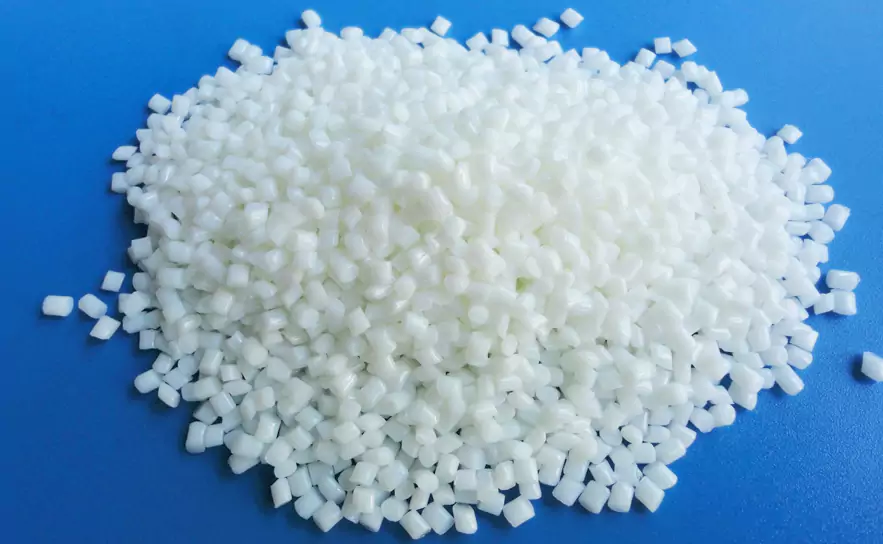
PBT
It has high heat resistance, toughness, fatigue resistance, self-lubricating, low friction coefficient, weather resistance, low water absorption, only 0.1%, and still maintains various physical properties (including electrical properties) and electrical insulation in a humid environment. However, volume resistance and electrical loss are large.
Resistant to hot water, alkalis, acids, oils, but easily corroded by halogenated hydrocarbons, poor hydrolysis resistance, rapid crystallization at low temperature, good formability. The disadvantage is that the notched impact strength is low and the molding shrinkage is large.
Therefore, most of them are reinforced by glass fiber or modified by inorganic filling, the tensile strength and bending strength can be more than doubled, and the heat distortion temperature is also greatly increased.
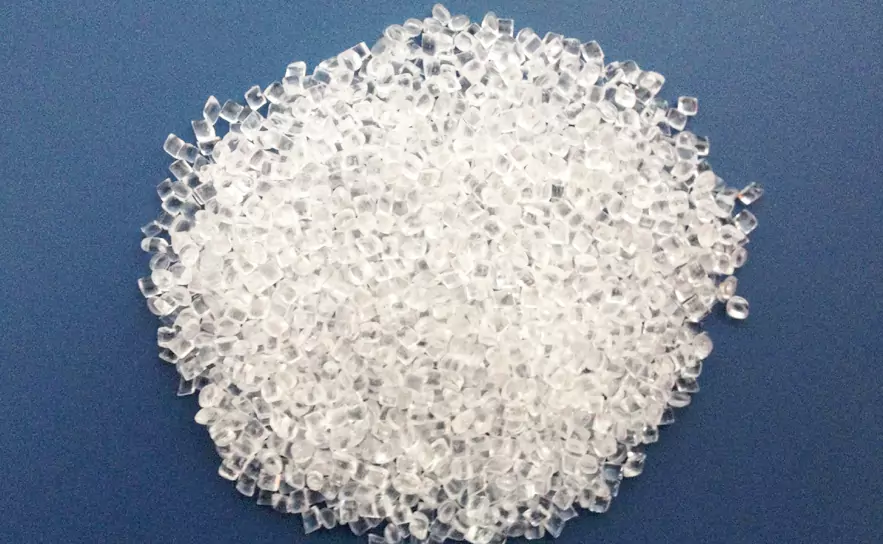
PC
PC is an almost colorless glassy amorphous polymer with good optical properties. PC high molecular weight resin has high toughness, the notched impact strength of the suspension beam is 600~900J/m, and the heat distortion temperature is about 130 degrees Celsius. After glass fiber reinforcement, this value can be increased by 10 degrees Celsius.
The flexural modulus of PC can reach more than 2400MPa, and it can be processed into large rigid products. Below 100°C, the creep rate under load is very low. PC has poor hydrolysis resistance and cannot be used for products that are repeatedly subjected to high-pressure steam.
The main performance defect is that the hydrolysis resistance stability is not high enough, it is sensitive to notches, the scratch resistance is poor, and it will turn yellow when exposed to ultraviolet light for a long time. Like other resins, PC is susceptible to clouding by certain organic solvents. PC material has flame retardancy, wear resistance and oxidation resistance.

PE
PE is a polymer with various structures and properties. It has excellent low temperature resistance (the lowest operating temperature can reach -100~-70°C), good chemical stability, and can resist most acids and alkalis (not resistant to acids with oxidizing properties). Insoluble in common solvents at room temperature, low water absorption, excellent electrical insulation.
It is very sensitive to environmental stress (chemical and mechanical action), and its heat aging resistance is poorer than that of the polymer’s chemical structure and processing. Polyethylene can be processed by general thermoplastic molding methods.
It has a wide range of uses, mainly used to manufacture films, packaging materials, containers, pipes, monofilaments, wires and cables, daily necessities, etc., and can be used as high-frequency insulation materials for TVs and radars.
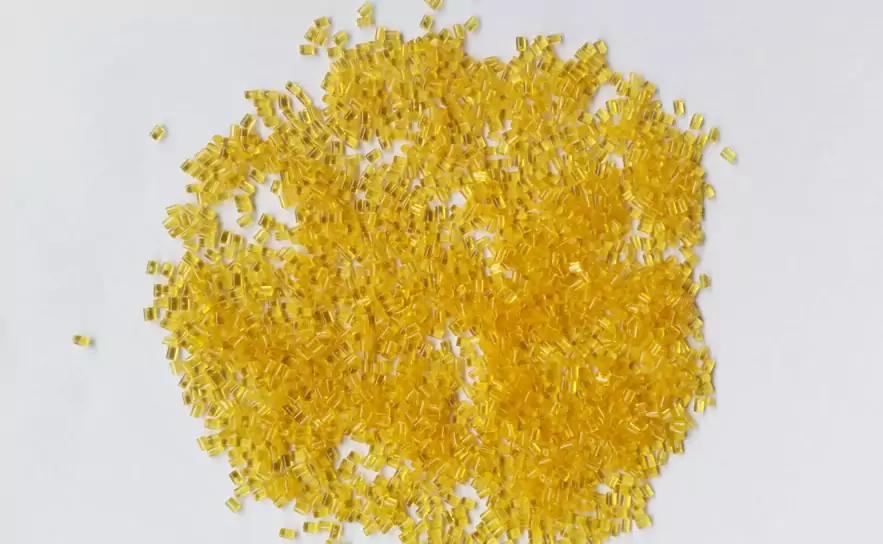
PEI
PEI is a strong and transparent material that can handle high temperatures. It’s good at resisting damage and can work well in electronics, machines, and airplanes. People use it instead of metal to make things like connectors for fiber optics, which helps make them smaller and more precise.
In cars, PEI can be used to make parts like connectors, lights, and sensors that control temperature. It’s also useful for making things like vacuum pump parts, and even special glass joints and lamp reflectors.
Overall, PEI is a versatile material that’s used in many different ways to improve products in various industries.

LDPE
Low density polyethylene, heat-welding property, good forming process performance, good flexibility, good impact toughness, low-temperature resistance, can work at -60C~-80C, density is 0.910~0.9259/cm3.
The mechanical strength is poor, the heat resistance is not high, the environmental stress cracking resistance, adhesion, adhesion, and printing are poor, and surface treatment is required.
LDPE is also used in injection molding products, such as small containers, lids, daily products, plastic flowers, injection-stretch-plastic containers.
Medical equipment, pharmaceutical and food packaging materials, extruded pipes, plates, wire and cable coating, profiles, thermoforming and other products;
Blow molding hollow molding products, such as food containers for dairy products and jams, medicines, cosmetics, chemical product containers, tanks, etc.

HDPE
HDPE is a highly crystalline, non-polar thermoplastic resin. High-density polyethylene is a white powder granular product, non-toxic, and the density is in the range of 0.940~0.976g/cm3;
Advantages: acid and alkali resistance, organic solvent resistance, excellent electrical insulation, and can still maintain a certain degree of toughness at low temperatures. Surface hardness, tensile strength, rigidity and other mechanical strengths are higher than LDPE, close to PP, and tougher than PP, but The surface finish is not as good as PP.
Disadvantages: poor mechanical properties, poor air permeability, easy deformation, easy aging, easy to become brittle, brittleness is lower than PP, easy to stress cracking, low surface hardness, easy to scratch. Difficult to print, when printing, surface discharge treatment is required, electroplating is not possible, and the surface is matte.
Application: used for extruding packaging films, ropes, woven bags, fishing nets, water pipes; injection molding of low-grade daily necessities and shells, non-load-bearing components, plastic boxes, turnover boxes; extrusion blow molding containers, hollow products, bottles.

PET
PETPET is a polyol resin, collectively referred to as thermoplastic polyol together with PBT. Milky white or light yellow, highly crystalline polymer with a smooth and shiny surface.
It has good mechanical properties, the impact strength is 3~5 times that of other films, and it has good folding resistance.
Resistant to oils, fats, dilute acids, dilute alkalis, and most solvents.
With excellent high and low-temperature resistance, it can be used in the temperature range of 120C for a long time, short-term use can withstand high temperature of 150C, and can withstand low temperatures of -70C, and the high and low temperatures have little effect on its mechanical properties.
Gas and water vapor permeability is low, and it has excellent gas barrier, water, oil and odor performance.
It is non-toxic, tasteless, hygienic and safe, and can be directly used in food packaging.
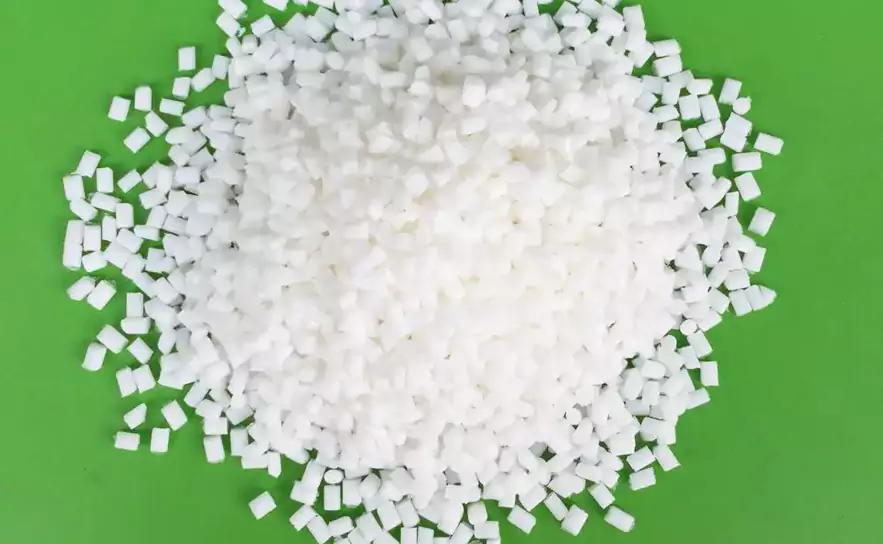
PP
PP is a non-polar crystalline plastic with a very low water absorption rate of about 0.03%~0.04%, and generally does not need to be dried during injection molding. Its specific gravity per cubic centimeter is about 0.9-0.91 grams, and the shrinkage rate is between 1.0-2.5%.
In addition, it also has the characteristics of colorless, odorless, non-toxic, light weight, good toughness, and good chemical resistance. The disadvantages are low dimensional accuracy and poor weather resistance. After demoulding, it is prone to problems such as aging, brittleness, and deformation. .
It is mainly used to manufacture various mechanical equipment parts, such as manufacturing industrial pipes, agricultural water pipes, motor fans, infrastructure templates, etc., as well as insulating shells of household appliances and inner tanks of washing machines, as well as insulating materials for wires and cables and other electrical appliances.
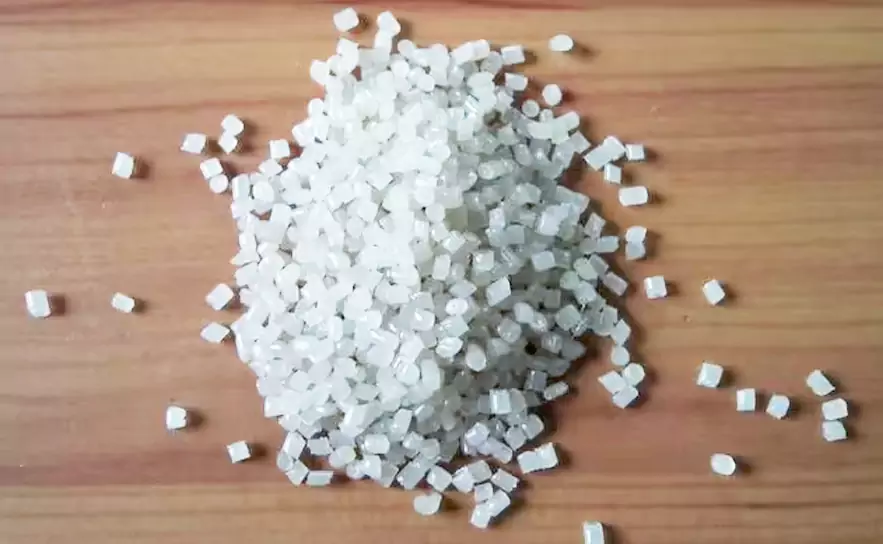
PPA
The heat distortion temperature of PPA plastic is as high as 300°C, and the continuous use temperature can reach 170°C, which can meet your short-term and long-term thermal performance.
PPA has superior strength, toughness and hardness, as well as its good heat resistance, chemical resistance and crack resistance.
Because it can still maintain strength and hardness under high temperature and high humidity environment, it can replace metal where traditional nylon and polyester cannot be used.
It also has superior surface gloss. It can be tinted without surface painting, helping to reduce the visibility of surface nicks and scratches.
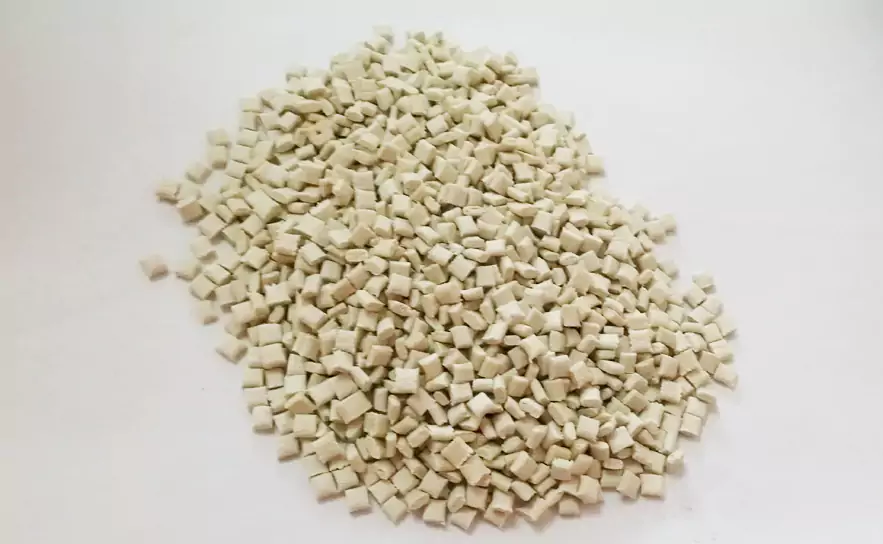
PPS
PPS is a white powder, specific gravity: 1.36 g/cm3, molding shrinkage: 0.7%. It is a thermoplastic special engineering plastic with excellent comprehensive properties, and its outstanding features are high temperature resistance, corrosion resistance and superior mechanical properties.
Mainly used in automotive functional parts, igniters, heater thermostats, lamp holders, bearings; for example, it can replace metal to make exhaust simple circulation valves and water pump impellers, pneumatic signal conditioners, etc.
It can also be used for shells, structural parts, wear-resistant parts and sealing materials, specifically pump bodies, valves, bearings, bearing brackets, piston rings and gears.
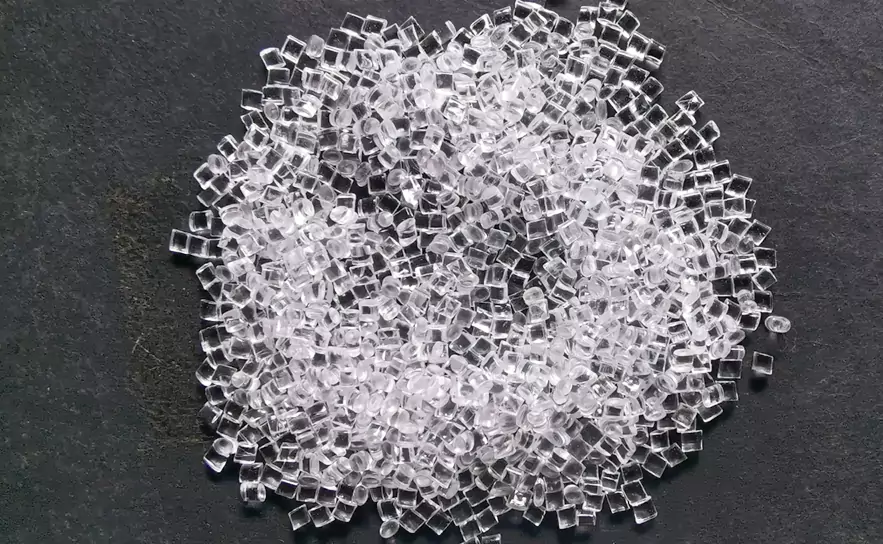
PMMA
PMMA is a highly transparent amorphous thermoplastic polymer with a relative density (30℃/4℃) of 1.188~122. High transparency, light transmittance 90%~92%, higher than plexiglass, and can pass through ultraviolet light up to 73.5%. The refractive index is 1.49. High mechanical strength, good toughness, tensile strength 60~75MPa, impact strength 12~13kJ/m, 8~10 times higher than inorganic glass.
Acrylic sheets are widely used in aviation, automobile, electronics, medical, chemical, building materials, sanitary ware and advertising signs and other industries, and are used to manufacture various products: acrylic products, plexiglass display stands, badges, gift boxes , Display stands, signs, signage stands, acrylic key chains, jewelry boxes, jewelry boxes, colorful cases, transparent cases.

POM
POM is a milky opaque crystalline linear thermoplastic resin with good comprehensive performance and colorability, high elastic modulus, high rigidity and hardness, and its strength and rigidity are close to metal;
The disadvantage is that the flame retardancy is poor, it burns slowly in case of fire, and the oxygen index is small. Even if a flame retardant is added, it cannot meet the satisfactory requirements. In addition, the weather resistance is not ideal, and a stabilizer must be added for outdoor applications.
It is widely used in the manufacture of various moving and rotating mechanical parts, as various gears, levers, pulleys, sprockets, especially suitable for bearings, hot water valves, precision metering valves, chain rings and rollers of conveyors, flow meters, automobiles, etc. Internal and external handles, cranks and other window rotating machinery, oil pump bearing housings and impeller gas switch valves, electronic switch parts, fastening bodies, terminal mirror masks, electric fan parts, heating plates, instrument buttons, etc.
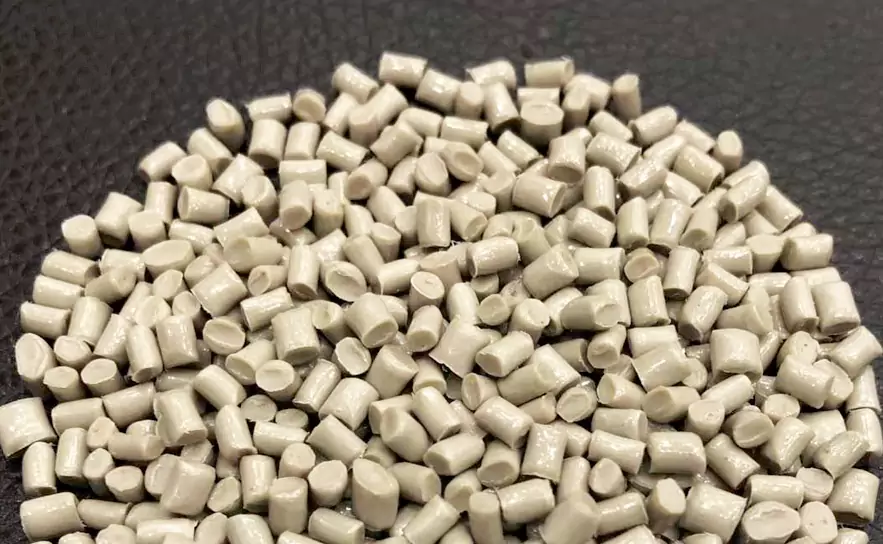
PEEK
PEEK is a semi-crystalline, high-performance thermoplastic engineering plastic. PEEK has strong mechanical properties, chemical corrosion resistance, wear resistance, fatigue resistance and dimensional stability, and can withstand high temperatures up to 260 °C.
Disadvantages: expensive; need to process at high temperature; susceptible to corrosion by some acids; low UV resistance.
Main application fields:
Aerospace: aircraft engine parts, turbine blades, gas turbine housings, etc.
Automobile: Automobile engine parts, transmission housings, brake system parts, etc.
Industry: heating elements for heating equipment, heat exchangers, pipes, etc.
Medical devices: artificial joints, dental implants, cardiac pacemakers, etc.
Electronic products: electronic connectors, cable bushings, battery separators, etc.
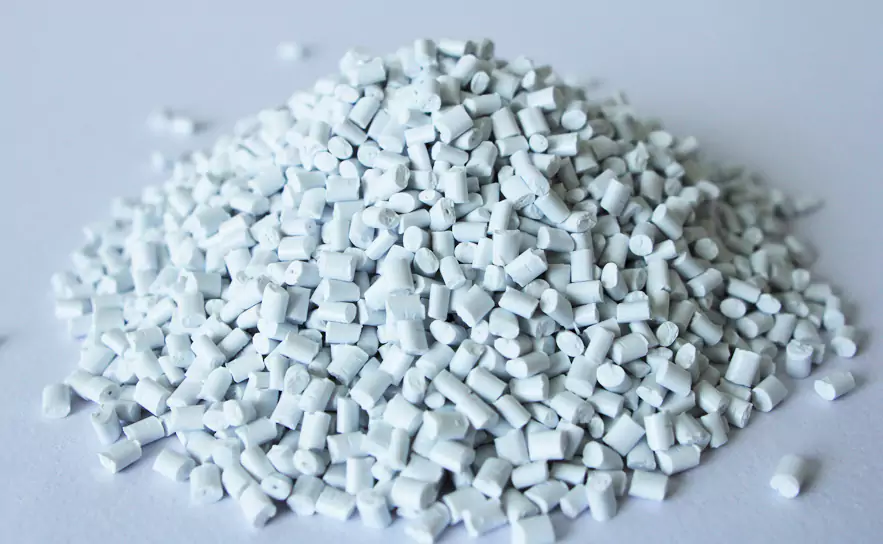
HIPS
HIPS is a high-performance polystyrene plastic, also known as high-impact polystyrene. It is a thermoplastic with excellent physical properties, including high strength, high toughness, high wear resistance, high chemical resistance and good processability, etc.
It has excellent thermal and shear stability and can accept high levels of regrind without degrading product performance, up to 60% regrind in thermoforming processes.
The largest single-use use of HIPS is as packaging and disposables materials, especially food packaging materials and eating tableware. Key applications include commodity packaging containers. Cups for vending machines and dispensing, various lids, trays. bowls and more. Disposable items such as dishes, bottle caps, safety razors, pen holders, etc. are also part of the high consumption of HIPS.
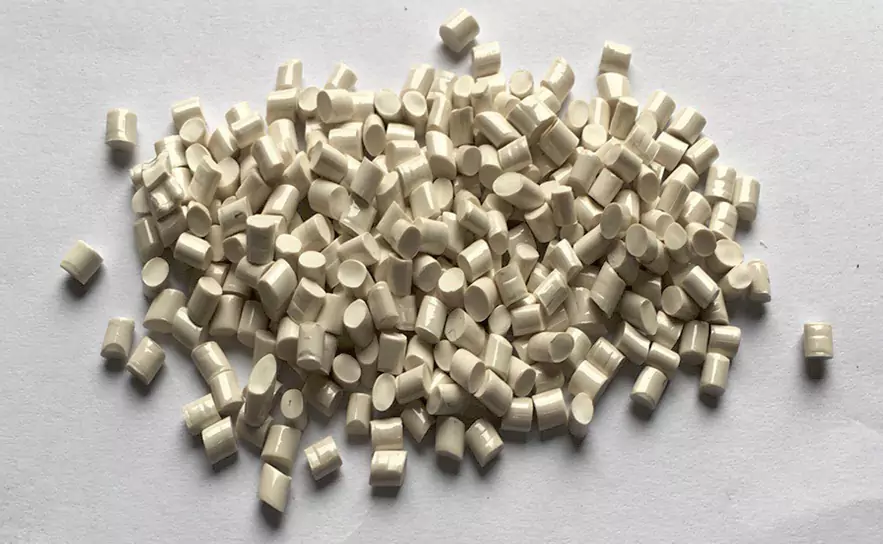
PSU
PSU plastic is a high-performance engineering plastic, its tensile strength and flexural strength are superior to general engineering plastics such as POM, PA, and PC, and its tensile strength can still reach 60MPa even at 150°C.
Features: High strength, rigidity and non-toxic, ideal for many high-strength and high-stiffness applications.
In the field of electronics and electricity, PSU can be used to make various contactors, connectors, transformer insulation parts, thyristor caps, insulating sleeves, coil skeletons, printed circuit boards, etc.;
In the automotive and aviation fields, PSU can be used to make protective cover components, electric gears, battery covers, detonators, electronic ignition device components, lamp parts, aircraft internal accessories and aircraft external parts, spacecraft external protective covers, etc.;
In the field of medicine and food, it can replace stainless steel products, and can manufacture surgical tool trays, sprayers, fluid controllers, heart valves, pacemakers, gas masks, dental trays, etc.

PU
PU is plastic and alias polyurethane is a polymer compound. There are two types of polyurethanes: polyester and polyether.
Good physical properties, bending resistance, good softness, high tensile strength, and air-attracting properties. The pattern of the PU fabric is to use a kind of pattern paper to paste it on the surface of the semi-finished leather first, and then separate the paper leather for surface treatment after cooling down.
It can be made into polyurethane plastic, polyurethane fiber, polyurethane rubber and elastomer. Widely used in home furnishing, construction, daily necessities, transportation, home appliances, etc.
Elastic Materials
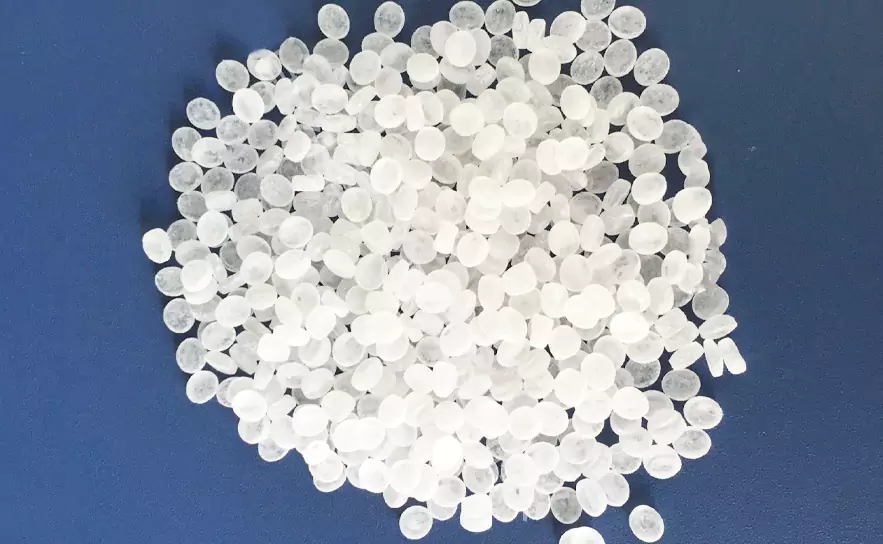
EPDM
EPDM is a terpolymer of ethylene, propylene and non-conjugated diene, the main characteristic is its superior resistance to oxidation, ozone and erosion.
Among all rubbers, EPDM has the lowest specific gravity. It can absorb large quantities of fillers and oils with little effect on properties. Inexpensive rubber compounds can thus be produced.
It has a wide range of uses, and can be used as tire sides, rubber strips, inner tubes, and automotive parts, as well as wires, cable sheaths, and high-voltage and ultra-high-voltage insulation materials. It can also manufacture light-colored products such as leather shoes and sanitary products.
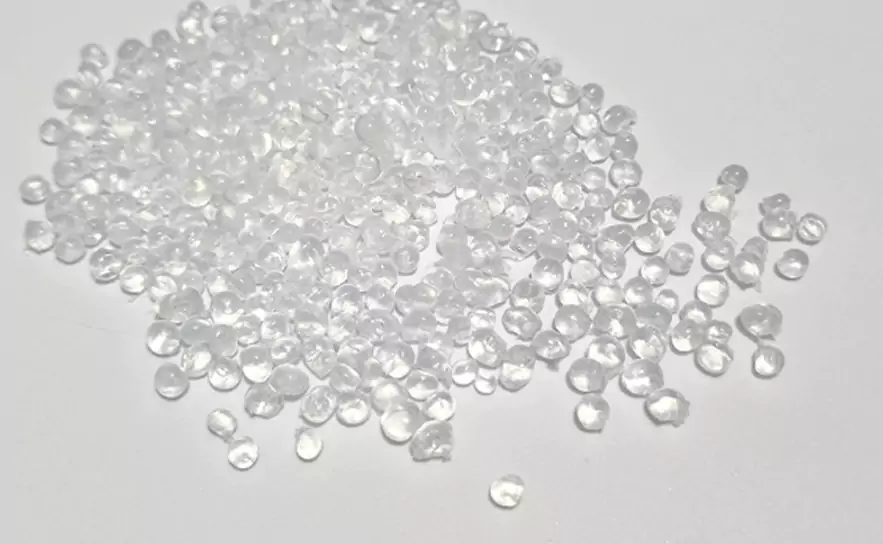
PEBA
PEBA is a high-performance synthetic material, its full name is Polyether Block Amide Elastomer (Polyether Block Amide Elastomer). It is a thermoplastic elastomer with excellent properties such as elasticity, wear resistance and corrosion resistance, as well as good processability and formability.
PEBA materials are widely used in medical equipment, sports equipment, automobiles, electronic products and other fields. For example, catheters, balloons, prostheses, cardiac pacemakers and other components in medical equipment are often made of PEBA materials;
PEBA materials are also commonly used in running shoes, basketball, tennis and other components in sports equipment;
Seals, pipes, hoses and other components in automobile manufacturing can also be made of PEBA materials.
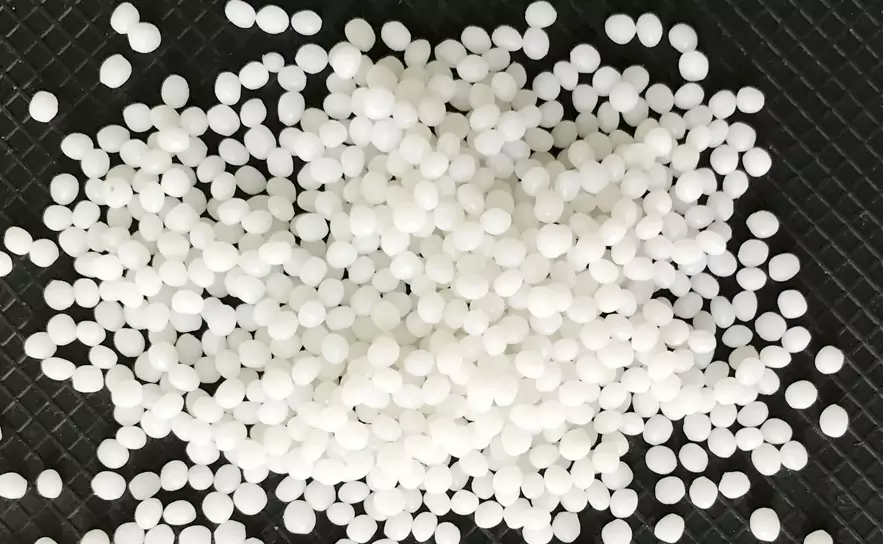
TPE
TPE, the full name of thermoplastic elastomer, refers to a class of recyclable polymer elastic materials, with unique plasticity, stretchability, flexibility and softness, and can also be dyed and processed according to different needs.
Detailed characteristics of TPE material: thermoplastic, good elasticity, wear resistance, environmental protection and safety, good temperature resistance, strong chemical corrosion resistance, adjustable softness and hardness.
The main application is the production of soft rubber toys, luggage accessories, buffers, shock absorbers, tire buffers, handles, steering wheels, dust covers, earphone cables, USB cables, cables, building sealing strips, door and window rubber strips, anti-collision buffer strips, etc. .

TPU
The tensile strength of TPU is 2-3 times that of natural rubber and synthetic rubber. It has excellent wear resistance, and its Taber wear value is 0.5-0.35 mg, which is the smallest among plastics.
The hardness of TPU is Shore A10~Shore D80, while the hardness range of general rubber is usually Shore A60~100.
With biocompatibility and anticoagulant properties, medical TPU is more and more widely used in artificial heart, artificial kidney, blood transfusion, plasma bag, ureter, surgical technology fixation material, etc.
Mainly suitable for wristbands, mobile phone cases, audio, mouse digital equipment, electronic instruments, etc.
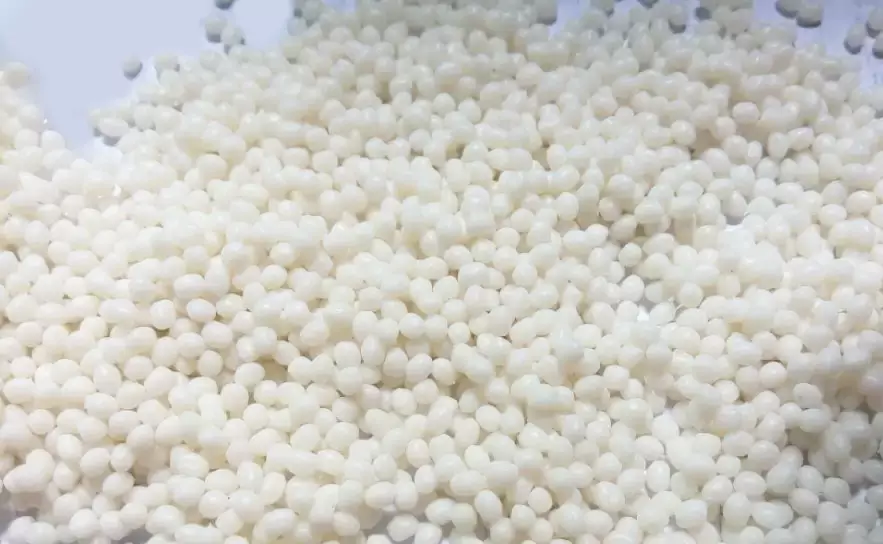
TPV
TPV is thermoplastic dynamic vulcanized rubber, which has the resilience of rubber and the processability of plastic, and can be used instead of rubber, so TPV materials are also commonly known as EPDM/PP materials.
TPV is mainly used in various sealing strips/seal materials of automobiles, high-voltage ignition wires, dust covers, air intake pipes, ventilation pipes, buffers, steering wheel foreskins, fenders, etc.
In the construction industry, it is mainly used in the sealing of doors, windows and curtain walls of buildings.
In the electronics industry, it is used to manufacture battery shells, wireless telephone shells and transformer shell sheaths, earphone cable sheaths, earphone cable connectors, power sockets, plugs, sheaths, etc.

LSR
Liquid Silicone Rubber (LSR) is a non-toxic, heat-resistant, high-resilience soft thermosetting material. Its rheological behavior is mainly characterized by low viscosity, fast curing, shear thinning and Higher thermal expansion coefficient values.
LSR’s injection products have good thermal stability, cold resistance and superior electrical insulation, and will not produce toxic substances when burned.
LSR has a wide range of applications, mainly used in health products, automobiles, baby products, medical appliances, diving supplies, kitchen utensils, and sealing applications. LSR is an irreplaceable material in the current production design.
Surface Textures
We have experienced professionals for surface treatment of molds.
| Name | Description | SPI | Guide | R.A Value | Typical applications | Injection Plastic material |
|---|---|---|---|---|---|---|
| Glossy | The diamond buffing process is employed to create polished and lustrous finishes on the injection mold, constituting the result of a grade. This procedure is notably time-intensive, with the choice of steel grade significantly influencing the ultimate outcome. | A1 | Grade #3 Diamond | 0-1 | Lens / Mirror – requires 420 SS material | Acrylic |
| A2 | Grade #6 Diamond | 1-2 | High Polish parts | Acrylic, PC | ||
| A3 | Grade #15 Diamond | 2-3 | High Polish parts | ABS, Acrylic. PS, Nylon, PC | ||
| Semi-glossy | Utilizing grit sandpaper, B-grade finishes are employed to craft components featuring a subtle and matte surface texture, effectively eliminating all traces of tooling and machining imprints. | B1 | 600 Grit paper | 2-3 | Medium Polish parts | ABS, Acrylic, PP. PS, HDPE, Nylon, PC |
| B2 | 400 Grit paper | 4-5 | Medium Polish | ABS, Acrylic, PP. PS, HDPE, Nylon, PC | ||
| B3 | 320 Grit paper | 9-10 | Med – Low polish | ABS, Acrylic, PP. PS, HDPE, Nylon | ||
| Matte | Grit sanding stones are employed in C-grade finishes to create an intentionally coarse and uneven surface. This process effectively eradicates tool and machining marks while enhancing mold release properties. The resulting mold surface exhibits a muted matte texture, devoid of any shine or sheen. | C1 | 600 Stone | 10-12 | Low Polish parts | ABS, Acrylic, PP. PS, HDPE, Nylon, TPU |
| C2 | 400 Stone | 25-28 | Low Polish parts | ABS, Acrylic, PP. PS, HDPE, Nylon, TPU | ||
| C3 | 320 Stone | 38-42 | Low Polish parts | ABS, Acrylic, PP. PS, HDPE, Nylon, TPU | ||
| Textured | In D-grade finishes, a combination of grit and dry glass beads or oxide is harnessed to generate an exceedingly rugged textured outcome, serving to conceal shrink marks and other flaws. The final appearance varies based on the material employed, potentially resulting in a satin or non-reflective finish for the products. | D1 | Dry Blast Glass Bead | 10-12 | Satin finish | ABS, PP. PS, HDPE, Nylon, PC, TPU |
| D2 | Dry Blast # 240 Oxide | 26-32 | Dull Finish | ABS, PP. PS, HDPE, Nylon, TPU | ||
| D3 | Dry Blast # 24 Oxide | 190-230 | Dull Finish | ABS, PP. PS, HDPE, Nylon, TPU |
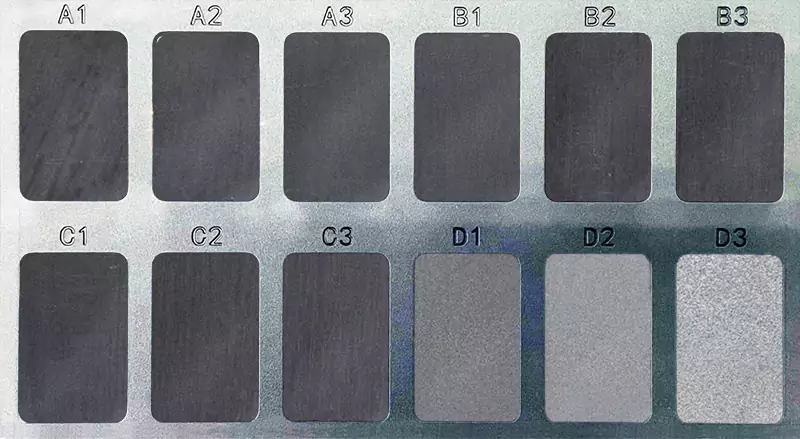
Second Opetations
To provide customers with perfect service is our highest purpose, we provide a variety of secondary processing, such as spray painting, silk screen printing and laser engraving and other services.
Frequently Asked Questions
Currently, we don’t provide design services, just focus on CNC machining. Although we do have engineers capable of making CAD designs, designing involves intensive knowledge in the field of the product required. Our specialty is converting a design to real not converting an idea to a design.
Yes, we are happy to help you with our knowledge of materials. Please send us the information, we will arrange for engineers to sort it out.
Yes, we do. We manufacture gear, worm, helical gear and some bevel gear in our CNC machining service.
No, we don’t manufacture wood product.
We don’t do 3D print ourself, if you need them, we can outsources for you.
Yes, we do. We do part marking with silk screening, laser engraving, and etching. If you need such service, please send design of the marking in .ai or .dwg form.
Yes we can. 2D drawing contains important information like tolerances, heat treatment, surface treatment etc. Without we will following ISO2768 medium for metal parts and ISO2768 coarse for plastic parts as default, and no heat treatment, no surface treetment, unless otherwise claimed.
The answer is case by case. It depends on if we have the assembly equipments and environment. If it is a simple assembly and we have the equipments, we will offer assembly service.
Stp file is an standard 3D file that all CAD and CAM programes (Proe, UG, Solidworks etc.) can open and convert to. If you only have CAD files with other file extension, send to us, we can covert it to stp file.
Near Your Location
USA
Related Blog
Application and development trend of rapid tooling manufacturing
As people’s quality of life has improved, the demand for various products has increased, and r…
How to analyze and optimize the mold flow of injection molded parts?
A set of high-quality injection molds is inseparable from reasonable design and exquisite processing…
Modern injection mold manufacturing technology and its development trend
In modern industry, there is a very crucial field called the mold industry. Mold technology is indis…

